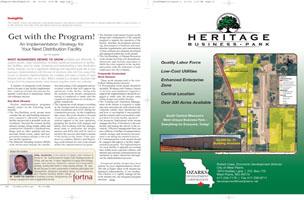
Most businesses desire to grow profitably and efficiently. To support growth, major investments, including significant investment in distribution facilities, must be made. Designing and implementing a new distribution facility, however, can be a significant challenge and represent great risk to your business. Implementations with the best of intentions often fail. One reason this occurs is because implementations are complex and have a series of work streams that are often run in silos. What’s needed is a program structure that brings all of the implementation work streams together under one umbrella.
A number of integrated work streams need to be part of any facility implementation—many are obvious, but some are frequently overlooked or minimized, which can endanger success.
Key Work Streams
Facility implementation programs mainly center on the following work streams:
• The Site/Building work stream must consider the site and building characteristics required to efficiently operate the facility and provide a desirable work environment. Beyond the normal facility mission, design, sizing, height, utility and construction elements considerations, things such as office quantity and size, associate break rooms, safety and loss-prevention measures all play a role in future facility operation.
• The Material Handling System (MHS) work stream must manage the installation and testing of all equipment and associated controls that will support the operations of the facility. Along with the systems work stream, integration testing is conducted to make sure the equipment and systems are working together seamlessly.
• The Operations work stream is working in the background developing procedural documents and SOPs during the construction process. As the completion date nears, this work stream is focused on process readiness, providing conversion support to the new operation, prepping the facility with signage and labels, and working with the management team to determine the proper metrics and KPIs that will be used to monitor the success and improvements of the facility in the future. If the operation is complex, Metrics and Reporting could warrant its own work stream within the implementation program.
• The Systems work stream focuses on the design and configuration of the systems required to support the operation of the facility. Interface development and testing, determination of hardware and infrastructure requirements, and customization of base software are elements developed and managed within this work stream.
• The On-Boarding, or Human Resources work stream develops job descriptions, interviews and recruits associates to fulfill the roles required in the facility, and assists with the transition of new employees into the company.
Frequently Overlooked Work Streams
These work streams tend to be overlooked, risking project success:
• A Procurement work stream should be included. Working with Finance, buyers of services and equipment required to support the implementation should be engaged to make sure the project stays within budget and within timeline.
• The Training and Transition Management work stream is required to make sure new associates are well-versed in the corporate culture, their operational role and how to accomplish it successfully, and the systems and tools needed to support their role in the facility operation.
• An Inventory Deployment work stream manages the flow of inventory to the new facility and timing the arrival of the inventory. Effective management here can save millions of dollars in transportation, outside storage and inventory-procurement costs during the transition period.
• A Communications work stream should be engaged throughout a facility implementation program. The implementation of a new facility is typically an exciting time within most corporate cultures, and internal and external communications are warranted at major milestones throughout the implementation process.
Exceptional facility designs have been undone by poor implementation efforts. The risk is higher when work streams are managed independently of one another. The solution is to tightly manage all the work streams into one integrated program structure.

